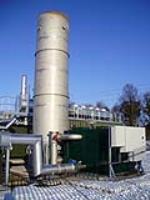 Add My Company
Add My Company
Sign In

Infrared absorption
Infrared absorption is usually the preferred method for measuring methane and carbon dioxide. Most gases absorb radiation in the infrared region. The wavelength of radiation that is absorbed is determined by the natural vibration frequencies of the molecule. These natural frequencies will depend on several factors. Thus different gas molecules have different natural frequencies and will absorb infrared radiation of different wavelengths.
The amount of radiation absorbed will be proportional to the path length through the gas and the concentration of the gas. Since the path length is fixed, the concentration of the gas can be calculated.
What is landfill gas?
Landfill gas can be a complex mixture. Methane and carbon dioxide usually predominate. Methane is produced during the major part of the decomposition process. Many other gases can be produced in trace amounts and the exact composition of the gas will vary between different landfill sites, parts of the same site, and over time. Clearly this has to be monitored and controlled.
Electrochemical cells
Not all gas molecules have a good infrared absorption band. For oxygen, carbon monoxide, and hydrogen sulphide, electrochemical cells are used. These cells are based on chemical reactions and are designed to give a voltage that is proportional to the concentration of the gas that they are measuring.
Electrochemical cells are simple to use but can respond to gases other than the one they were designed to detect, which on occasion leads to spurious results. They also have a limited lifetime.
Measurement of carbon monoxide
Carbon monoxide is usually a trace gas. An increase in the concentration of carbon monoxide can be indicative of a fire in a landfill site which can be a major problem for the operator. Consequently, carbon monoxide measurements are of great importance.
CO is usually also measured by electrochemical cell. These cells are sensitive to gases other than CO. In particular both H2S and H2 will give a reading on a CO cell and both of these gases can be present in landfill gas. This can cause spurious CO readings and wasted time and cost in trying to put out a fire that is not there.
Filters can be used that will absorb all of the H2S before it reaches the analyser. These filters are cheap and disposable and will give an immediate improvement in the measurement of CO where H2S is also present. The hydrogen problem has now been solved by a new technique that can measure the CO in the presence of hydrogen. These developments used together should give improved and more reliable CO measurements.
The future
Gas analysis, measurement and monitoring is constantly developing with new technologies emerging. The already excellent infrared absorption cell may soon be further advanced using a laser light source to give even greater and accuracy and precision.
For more information on Monitoring landfill gas talk to QED Environmental Systems Ltd
Enquire Now
List your company on FindTheNeedle.

